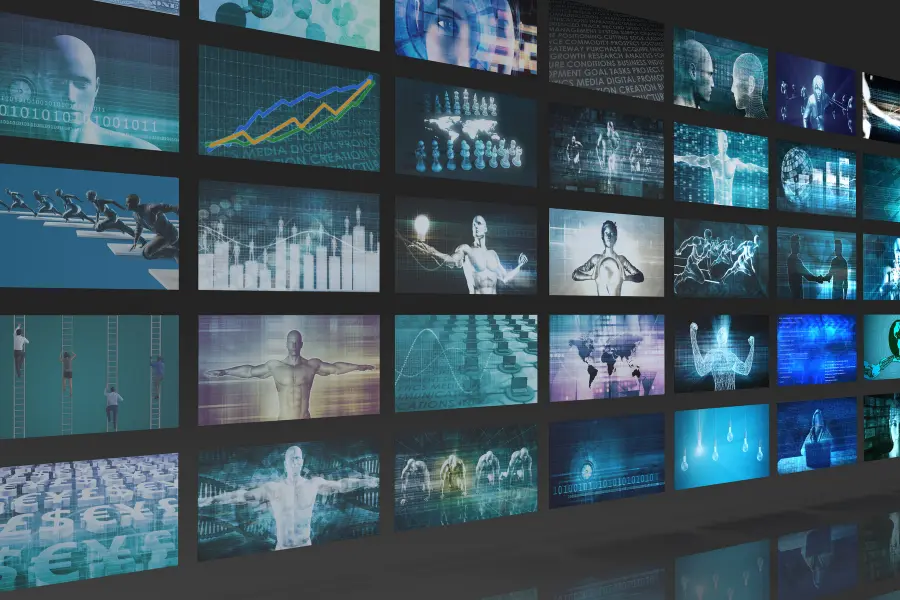How Python Facilitates AI-Driven Image and Video Analytics in IoT Surveillance
Python has become instrumental in enabling sophisticated image and video analytics in IoT surveillance systems through its rich ecosystem of libraries, frameworks, and tools. Leveraging Python's capabilities in machine learning and computer vision, developers can implement AI-driven solutions that enhance security monitoring, detect anomalies, and automate surveillance tasks with high accuracy and efficiency.

Key Components of Python in AI-Driven Image and Video Analytics
1. Computer Vision Libraries
Python offers powerful computer vision libraries that simplify the processing and analysis of images and videos:
- OpenCV (Open Source Computer Vision): A versatile library for image and video processing tasks such as object detection, tracking, facial recognition, and optical character recognition (OCR).
- Dlib: Provides tools for facial landmark detection, face recognition, and real-time object detection.
- TensorFlow Object Detection API: Built on TensorFlow, this API supports pre-trained models for object detection and localization in images and videos.
2. Deep Learning Frameworks
Python's deep learning frameworks, such as TensorFlow and PyTorch, enable the development and deployment of AI models for image and video analytics:
- Convolutional Neural Networks (CNNs): Python frameworks support CNN architectures that excel in tasks like image classification, object detection, and semantic segmentation.
- Recurrent Neural Networks (RNNs): Used for video analysis tasks such as action recognition, scene understanding, and anomaly detection in surveillance footage.
3. Edge Computing Capabilities
Python's lightweight footprint makes it suitable for deploying AI models on edge devices, where real-time analysis of surveillance data is critical:
- Optimization Techniques: Techniques like model quantization and pruning optimize deep learning models for inference on edge devices with limited computational resources.
- Edge AI Frameworks: Frameworks such as TensorFlow Lite and ONNX Runtime support efficient deployment of AI models on edge devices like cameras and IoT gateways.
4. Real-Time Processing and Analytics
Python's NumPy and SciPy libraries, along with asynchronous programming support (asyncio), facilitate real-time processing and analysis of streaming video data from IoT surveillance cameras:
- Video Stream Processing: Python scripts can preprocess video streams, extract frames, apply AI models for object detection or facial recognition, and generate alerts or notifications in real-time.
- Event Detection: AI-driven algorithms can analyze video feeds to detect events of interest, such as intrusions, unauthorized access, or unusual activities, enhancing security monitoring in IoT surveillance systems.
Implementing AI-Driven Image and Video Analytics with Python
1. Model Training and Integration
Python's scikit-learn, Keras, and deep learning frameworks enable developers to train AI models on labeled surveillance datasets for tasks like object detection, person re-identification, and behavior analysis.
2. Integration with IoT Devices
Python scripts can interface with IoT devices (e.g., IP cameras, drones) using protocols like RTSP, MQTT, or HTTP, enabling seamless integration of AI-driven analytics into existing surveillance infrastructure.
3. Visualization and Reporting
Python's Matplotlib, Seaborn, and Plotly libraries facilitate visualization of analytics results, enabling security operators to visualize trends, anomalies, and insights from surveillance data effectively.
Real-World Applications and Impact
- Smart City Surveillance: Python-powered AI models analyze video feeds from IoT cameras to monitor traffic, detect accidents, and manage public safety in urban environments.
- Industrial Security: AI-driven surveillance systems enhance monitoring of manufacturing facilities, detecting equipment failures, and ensuring compliance with safety regulations.
- Retail Analytics: Python-based video analytics track customer behavior in retail stores, optimizing store layouts, and improving marketing strategies based on foot traffic and consumer demographics.
Challenges and Considerations
- Data Privacy and Compliance: Implementing AI-driven surveillance systems requires adherence to privacy regulations (e.g., GDPR, CCPA) and ethical considerations regarding data collection and usage.
- Scalability: Python-based solutions must scale efficiently to handle large volumes of video data and support multiple cameras in distributed IoT surveillance networks.
- Robustness: AI models need to be robust against environmental factors (e.g., lighting conditions, weather changes) and variations in surveillance camera quality to maintain accurate analytics performance.
Python's extensive capabilities in machine learning, computer vision, and edge computing empower developers to build AI-driven image and video analytics solutions for IoT surveillance. By leveraging Python's libraries and frameworks, organizations can enhance security monitoring, automate surveillance tasks, and derive actionable insights from visual data to ensure safety and efficiency in various applications.
Active Events
Laying the Groundwork: Python Programming and Data Analytics Fundamentals
Date: Feburary 26, 2025 | 7:00 Pm
7:00 Pm - 8:00 Pm
2811 people have registered
Transition from Non-Data Science to Data Science Roles
Date: Feburary 27, 2025 | 7:00 PM (IST)
7:00 PM (IST) - 8:10 PM (IST)
2753 people have registered
3 Must Have Projects On your CV to Get into Data Analysis
Date: Feburary 25, 2025 | 7:00 PM(IST)
7:00 PM(IST) - 8:10 PM(IST)
2753 people registered
Bootcamps
Data Analytics Bootcamp
- Duration:8 weeks
- Start Date:October 5, 2024
Data Science Bootcamp
- Duration:8 weeks
- Start Date:October 5, 2024
